South Moravia is without a doubt, one of the most romantic places I have visited in the Czech Republic. During my road trip in South Moravia, I drove along windy roads passing through vineyards, visited gorgeous castles and palaces, enjoyed picture perfect panoramic views, and savoured the most delicious traditional Czech food and wine.
South Moravia is the main wine region of the Czech Republic, with over 96% of the country’s vineyards located here. This is why the Czech wine is actually very often referred to as Moravian wine. There are four wine sub regions in South Moravia, the oldest one being centred around the Pálava Hills and Mikulov. The local wine produced here is the aromatic variety Pálava, as well as Ryzlink Vlašský, Chardonnay and Pinot Blanc.
The biggest city in South Moravia is Brno. You can read about my trip to Brno by clicking here.
Day 1: Mikulov

I knew that Mikulov would be a special place to visit as soon as I saw the castle standing proud above the land below, dominating the scenery. I first spotted it from the motorway, even before I crossed the border from Austria into the Czech Republic.
There are plenty of things to do in Mikulov, and I highly recommend that you spend at least one day here, not only to see the different touristic attractions but also to enjoy the very laid-back atmosphere of the town.
Things to Do in Mikulov:
Visit Mikulov Chateau

Visiting the Mikulov Castle, the grounds and exhibitions can easily take a good few hours. There is so much to see! Mikulov Castle dates from the 13th century. In the 16th century it was rebuilt by the Dietrichstein family and then again completely reconstructed in 1950 after it was burned down by the retreating German Army.
I started my visit with the gardens, which are beautifully landscaped and terraced around the castle on different levels. The panoramic views from the gardens are gorgeous too, and you can see far beyond the town’s lines.

The grounds of the chateau can be visited free of charge. For the exhibitions, there are either group tours or self-guided walks. I would loved to have seen the giant wine barrel in the Romanesque cellar of the castle, but I booked the wrong exhibition, so I explored the Wine Across Centuries display instead. It was fascinating to learn how wine first started to be cultivated in the Czech Republic and its evolutions through time. There are a few interactive elements, such as what wine fits your zodiac sign – mine is Tramín Červený, a local variety grown in the Pálava Hills.
See the Dietrichstein Tomb

The Dietrichsteins were a noble Austrian family belonging to the Hochadel – High Nobility in the German Confederation. They took over Mikulov Castle from the Liechtenstein Family back in the 16th century, reconstructing it completely into a Baroque style.
The most notable member of the Dietrichstein family was Franz Seraph, whose influence in Mikulov and his position as a powerful politician in Moravia, transformed the town into the unofficial capital of the country.
The members of the Dietrichstein family are buried inside a magnificent building which is a protected cultural monument in the Czech Republic. The Dietrichstein Tomb was built on the ruins of the old Church of St. Anna, in the lower part of the main square in Mikulov.
See the Synagogue and the Jewish Cemetery

The first Jews settled in Mikulov in the 15th century, after the Duke Albrecht V. Habsburský expelled them from Vienna. The community grew and by the 17th century became one of the largest Jewish areas in Moravia.
Most of the houses that survived the fire from 1719 can be seen on Husova Street, where the Synagogue is also located. The Mikulov tourism board has a self-guided Educative Path across the Jewish Quarter – you can access it here.
Climb the Holy Hill at Sunset

Even if the Holy Hill does look like a challenging trail when you look at it from the town, it really isn’t. It took me around 20 minutes to climb to the top, and I am not very athletic at all. The path to the top is rocky, so make sure you are wearing appropriate shoes.
On the way up the hill there are different statues depicting the path of the cross. The final stop is the Chapel of St. Sebastian, on top of the hill.
The best time to climb the Holy Hill is either before the sunrise or at sunset. The sun sets just behind Mikulov, and the castle makes a fantastic backdrop for the vibrant twilight colours.
Have Dinner at Vinárna Hrozen

I stumbled upon this pretty restaurant with a terrace covered in vines after I returned from the Holy Hill hike. As a solo traveller I always dread entering a restaurant and asking for a table for one, but the staff were really nice and had no issue with my request to sit on the terrace. The weather was lovely, even as it started to cool down as the sunset began.
Even though the menu wasn’t in English, with the help of Google I managed to translate it. I ordered a goulash made with local wine and a large glass of the local beer.
Check in at Pension Alva

I chose to stay the night at Pension Alva because it was centrally located with private parking, and was low-cost. Checking in was a bit confusing, as the guest house doesn’t have a reception and the lady who I bumped into at the door didn’t speak English. Despite this, my stay here was great. The room was spacious and extremely clean, with air conditioning, a fridge, and a pretty view towards the Holy Hill. The parking was in the interior yard, not outside on the street.
For my stay here I paid 45 euros per night. You can check the latest rates on Booking.com, or read the reviews directly on TripAdvisor by clicking here.
Day 2: Chateau Valtice and Chateau Lednice
Breakfast at (Ne)vinná Kavárna

I loved that in Mikulov many of the wine bars were open for breakfast in the morning and for drinks in the afternoon and evenings. I chose (Ne)vinná kavárna for breakfast because they had a lovely terrace overlooking the street and part of the main square. I ordered a long espresso, which came with both milk and hot water, as well as a mini Manner waffle. I don’t usually eat in the morning, but I noticed on the menu that they also serve cakes for breakfast. Next to the wine bar is a bakery as well, should you want sandwiches or pastries.
Chateau Valtice

The road connecting Mikulov with Valtice goes through beautiful vineyards and a couple of small villages. It’s a pleasure to drive along, especially because if remember well, the speed limit is 30, and you can enjoy the scenery at a slow pace.
Where to Park:

When I arrived in Valtice, I first headed to the Chateau Valtice Cellars. Just outside the estate is a small parking area that charges 50 korunas per stay. However, if you buy wine from the vineyard and let them know you’ve parked there, they will give you a token that will open the barrier.
Visiting Chateau Valtice

Part of the Lednice-Valtice Cultural Landscape Unesco Heritage List, The Valtice Palace was originally built in a Gothic style, sometime during the 12th century. After it became the residence of the Liechtenstein family, it was redesigned in a Baroque style.
The Valtice Palace is an important centre for the Czech Republic’s wine industry, with the only Wine High School in the country. During the famous National Wine Salon competition, 100 of the best wines in the Czech Republic are awarded and selected to be tasted in the castle’s cellars before being sold in the shop the following year. So, if you are looking for a good local wine, this is where to buy it.
Chateau Valtice Wine Cellars

I highly recommend you stop at the wine cellars and buy yourself some local wine at the producer’s price. I ended up buying four different wines. The cellars offer wine tastings as well, but unfortunately I was driving, so I had to pass. However, I did enjoy a lovely glass of Pálava with my dinner that evening.
Chateau Lednice

The House of Liechtenstein first acquired Lednice Chateau in the mid-13th century. Later, in the 14th century, they took possession of Valtice Palace as well. By the 17th century the two estates were connected, creating a unique 283 square kilometres estate. Just to put this into perspective, the entire country of Liechtenstein is only 160 square kilometres. And yes, the Liechtenstein family did founder Liechtenstein as a country, but their main residence was at Lednice-Valtice.
Where to Park:
I arrived at Lednice on a late August afternoon and I parked just outside the gates. The car park isn’t very big, but there were still a few spaces available. It costs 25 korunas per hour, and you need coins to pay at the machine. Click here for the location of the car park.
Visiting Chateau Lednice

Lednice Palace is much, much bigger than Chateau Valtice, so make sure you leave plenty of time to explore it and the grounds. It would probably take more than a day to see everything – I know I wasn’t able to explore as much as I wanted to.
Castle Tour

There are four different guided tours that you can take at Chateau Lednice, each based on a different part of the palace. Besides those, you can also visit the Minaret and the Arabic Rooms, the Greenhouse with tropical plants, and the ruins of John’s Castle.
Make sure you check the opening hours of the complex, as some attractions, such as the Minaret, are not open during winter.

I took the first tour of the castle, which focused on the representative rooms from the ground floor. It lasted 45 minutes and included a beautiful performance at the end, which re-created some of the atmosphere of the palace from the times when the Liechtenstein family lived there. The Chateau’s ballroom, library and blue hall, look like they have been taken out of a fairy tale. The carved wooden panels on the walls and ceiling contrast so much with the striking blue wallpaper which is decorated with the Liechtenstein family’s coat of arms.
Gardens

The landscaped gardens of the Lednice – Valtice Complex were inspired by the English design of Lancelot “Capability” Brown, which I’ve talked about before after my visit at Blenheim Palace in Oxford. Duke Jan Josef I brought the concept from England and supervised the creation of the gardens.
It took centuries to complete landscaping the gardens of the massive estate. All the buildings and the lakes on the grounds were connected to each other under the English pattern concept.

During my visit I had the chance to see a unique exhibition about the Aristocracy of Central Europe from the 18th and 19th centuries and their African slaves. It was so informative, starting with the first African people traded to Europe, and ending with the European enlightenment and the ban on slavery.
The Estate

The estate is so large that it can explored by foot, by boat, by mini train or by horse and carriage. It takes around one hour to walk around the lake and reach the minaret.
Day 3: Brno

I stayed at Lednice Chateau until closing time, exploring the gardens and the estate. It was just too beautiful. At 6 I went back to my car and made my way to Brno, where I spent two more nights. You can read about all the things I did in Brno and how to plan a full one-day itinerary in the city by clicking here.
Like it? Pin it!
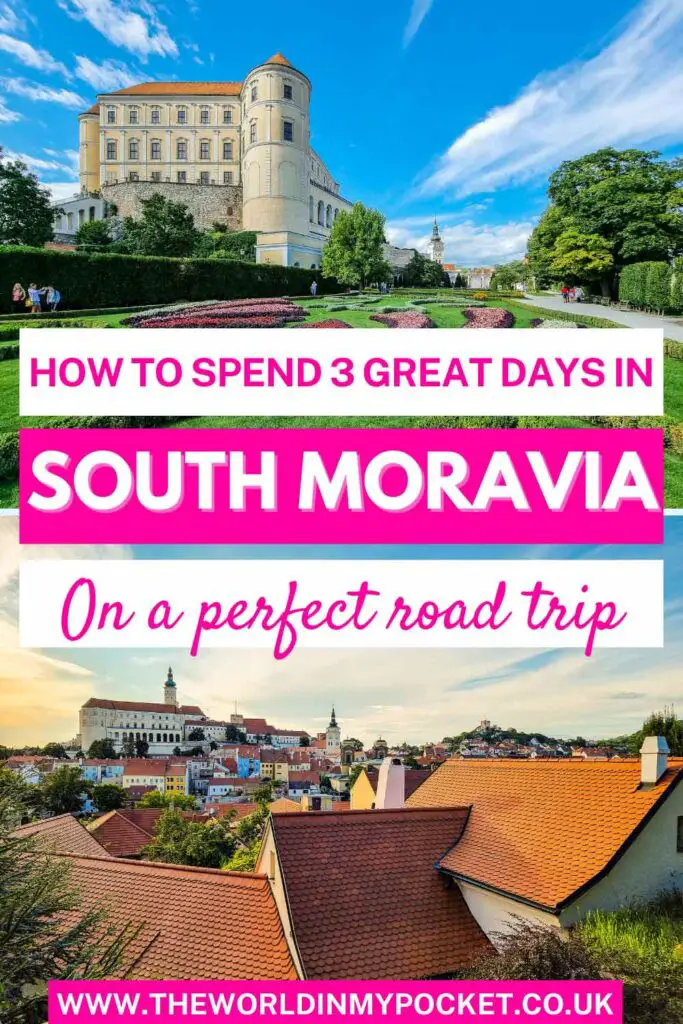
Disclaimer: Some of the links on this website are “affiliate links.” This means that if you click on the link and do a purchase, I will receive an affiliate commission at no extra cost for you. This helps me keep my website running and continue to share my travelling knowledge with you. I thank you for booking your flights or hotels using the links on my website. Regardless, I only recommend products or services I use personally and believe will add value to my readers.
Please note that part of this trip was supported by the South Moravia Tourism Board and CzechTourism.

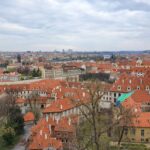
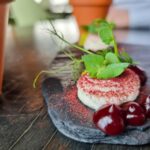
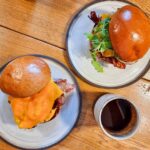
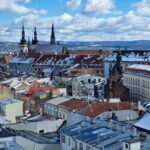
We’ve been looking at destinations next month and remembered you mentioned this region. Seems to be pretty budget friendly and suitable for Henry